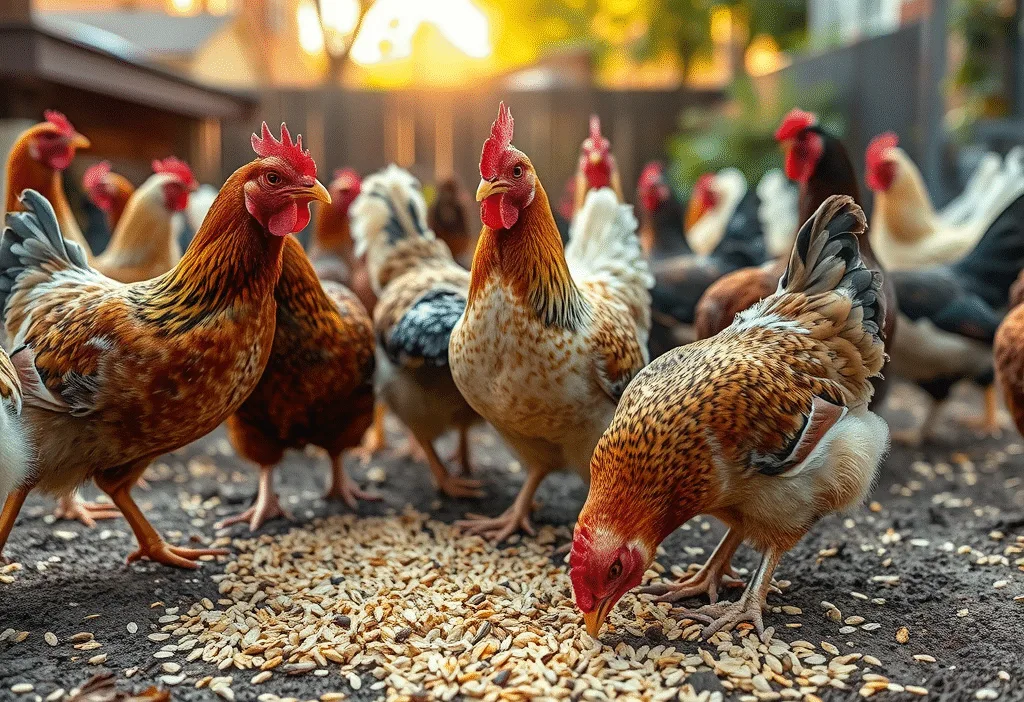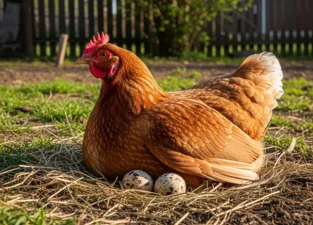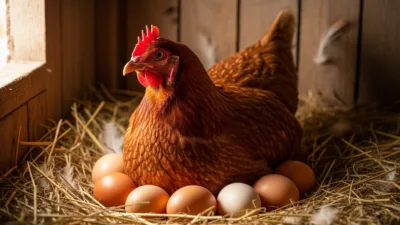Feeding chickens in an urban backyard comes with its own set of challenges, from limited space to strict city ordinances. One thing that remains constant, whether you’re homesteading in the country or raising hens in a small suburban coop, is the need for variety in your chickens’ diet. That’s where scratch grains come in.
Scratch grains are a popular treat for chickens. While they shouldn’t replace balanced layer feed, the right scratch mix offers enrichment, encourages natural foraging behavior, and helps keep urban hens active and healthy. In this post, we’ll explore the best scratch grains for urban chickens, what to avoid, and how to feed them responsibly in tight backyard setups.
What Are Scratch Grains?
Scratch grain is a mix of whole or cracked grains used as a supplement or treat for chickens. It’s often tossed onto the ground to encourage pecking and scratching, mimicking natural foraging. Unlike formulated feeds, scratch does not contain added vitamins or balanced nutrition, it’s mainly carbohydrates and should make up no more than 10% of a chicken’s daily diet.
Why Use Scratch Grains in Urban Chicken Keeping?
Urban chicken coops are often smaller, with limited run space. Scratch grains help keep chickens entertained and mentally stimulated in confined environments. They also:
Promote natural behaviors like scratching and foraging
Reduce boredom and aggressive pecking
Warm chickens up in cold mornings (high-energy carbs)
Encourage social interaction in the flock
Support composting if scattered over mulch or bedding
Used correctly, scratch grains can be a low-cost and effective way to enrich an urban flock’s environment.
Best Scratch Grains for Urban Chickens
Cracked Corn
Cracked corn is a favorite base for scratch mixes. It’s inexpensive, widely available, and high in energy. Chickens love the taste, especially in cooler weather when they need extra calories to stay warm. However, it should be fed in moderation as it lacks protein and can lead to weight gain if overused in small spaces.
Whole Oats
Whole oats provide both fiber and energy. They’re excellent for helping chickens feel full without overloading them with calories. Oats also support digestive health and are less likely to spoil when stored properly. This grain works well in DIY scratch mixes for small coops where controlled feeding is key.
Black Oil Sunflower Seeds (BOSS)
Black oil sunflower seeds are highly nutritious and rich in healthy fats and protein. They improve feather quality and offer essential nutrients often missing in grain-only diets. Because they are calorie-dense, a small amount goes a long way. BOSS is especially beneficial during molting or winter.
Barley
Barley is a slower-digesting grain that helps maintain steady energy levels. It can be fed whole or rolled and is great for keeping chickens satisfied throughout the day. Barley adds diversity to scratch blends and supports gut health, making it a smart choice for small flocks on restricted space.
Milo (Sorghum)
Milo is a small red grain found in many commercial scratch mixes. It’s affordable and chickens usually enjoy it once they’re used to the taste. It’s lower in energy than corn and works well when blended with higher-fat seeds. Avoid feeding too much milo alone, as it lacks variety.
Wheat
Wheat is a protein-rich grain that supports growth and egg production. It’s ideal in moderation and balances well with corn and sunflower seeds. Cracked or whole wheat can be part of a rotation to give chickens different textures and flavors. It’s also easy to find at local feed stores.
Tips for Feeding Scratch Grains in Urban Settings
Feed in the afternoon to avoid hens filling up before their layer feed
Scatter scratch on clean ground or bedding to encourage natural pecking
Use scratch to turn over deep litter or mulch in composting systems
Limit to no more than 10% of daily food intake to avoid nutritional imbalances
Store grains in dry, rodent-proof containers to prevent waste or spoilage
For very small coops or runs, use scratch sparingly. Too much loose grain can attract pests, encourage mess, or lead to mold if not consumed quickly.
What to Avoid in Urban Scratch Grains
Avoid feeding stale bread or leftover cereal as scratch substitutes
Stay away from moldy grains or anything stored in damp containers
Avoid scratch blends with added salt or sweeteners
Don’t use scratch grains as a complete feed it, lacks essential vitamins and minerals
Be cautious with blends that include whole corn if you have small breeds
Not all chickens thrive on the same grains, so test small amounts and observe how your flock reacts. You may find certain breeds prefer oats over milo, or that cracked corn works better in winter than summer.
Final Thoughts
Scratch grains are an excellent way to keep urban chickens healthy, happy, and engaged. The best scratch blends combine grains like cracked corn, oats, barley, and sunflower seeds in moderation. When used correctly, they help your flock stay active and content, even in a small backyard.
If you’re looking to build your own scratch mix, focus on variety, clean storage, and seasonal needs. Urban chicken keeping is all about balance, and with the right approach, scratch grains can be both fun and functional.



